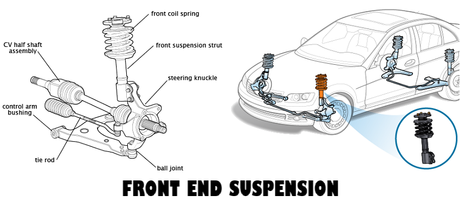
In general, there are three possible causes of why the car pulls to the right.
(1) Wheels severely out of alignment.
(2) Front tire pressure mismatch.
(3) Dragging front brake.
The idea of "wheel alignment" basically has to do with how straight the wheels are relative to the vehicle's frame. If the wheels are severely out of alignment (i.e. "crooked"), the car will "pull" heavily.
Although this isn't much of an explanation, there really isn't much more to say about this without going into a lot of technicalities that only a professional mechanic would understand (and we are assuming you're not a professional mechanic).
Getting an alignment job should fix the "pull". Incidentally, whenever the wheels are out of alignment, the tires will wear abnormally. Therefore, have this problem taken care of soon to avoid further tire wear. But since the car pulls to the right after alignment, rule out the possible problem of the wheels is severely out of alignment.
Since this car has a heavy pull (as opposed to a mild pull), it's possible that one or more suspension components are damaged and will need to be replaced in order for the alignment to be done properly. In other words, don't be surprised if a mechanic tells you this.

What to do?
Try to find a garage that is approved by the AAA. Such garages tend to be reputable and, best of all, if you do have a dispute after the work is done, the AAA has the policy to investigate the situation and resolve it.
Car Troubleshooting
Using a tire pressure gauge, check the air pressure of each front tire and compare it to what it's supposed to be (refer to the car's owner's manual if you are unsure of the correct pressure).
How to Check Tire Air Pressure
The tire tread life will be reduced if the tire air pressure of your car is below the car manufacturer tire air pressure specified on your car owner’s manual.Learn more: How to Check Tire Air Pressure
If the two pressure readings are a lot different, the pressure mismatch is causing the car to pull. Since the front tires are at different pressures. This condition will cause the car to pull because of the imbalance it creates in the front end. By the way, the car will pull to the right if the right tire is the lower of the two and, to the left if the left tire is the lower of the two.
What to do?
Make sure both front tires are at the correct pressure - this should correct the "pull" of this car. Refer to this car owner's manual if you aren't sure of the correct tire pressure. But if there is no difference between the two pressure readings, rule out the front tire pressure mismatch.
Drive the car for about 15 - 20 minutes and then get out and very quickly touch the rim/hubcap of each front wheel. Try to determine if there is any difference in temperature between the left side and right side.
If one side hotter than the other then the wheel which is hotter has a dragging brake. Dragging brake is causing the car to pull.
As what is indicated above after driving the car, one front wheel (i.e. rim/hubcap) was hotter than the other. A dragging brake (i.e. a brake that doesn't fully release) will cause this to happen because of the intense heat generated as a result of the constant friction. Further, a dragging brake will cause the vehicle to "pull" because of the imbalance it creates in the front end of the vehicle.
What to do?
Take the car to a reputable repair shop (AAA approved shops are recommended) and ask a mechanic to inspect the front brake unit which seems to be dragging. Tell the mechanic this is what you believe is causing the car to pull heavily. You may be wondering what's causing the brake to drag?
Well, if you're lucky, a corroded support bracket will be the culprit. This will only mean cleaning the bracket with a wire brush and then coating it with a suitable lubricant.
However, if the support bracket looks good and is free of corrosion, the piston inside the brake caliper could be seized. If this is the case, you'll have to replace not only that entire caliper but the other front brake caliper as well since both calipers must match.Good luck.
